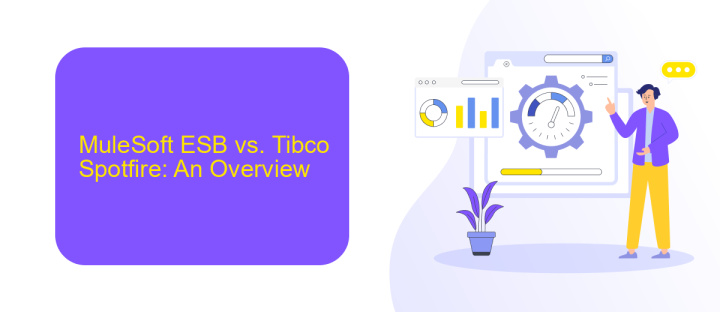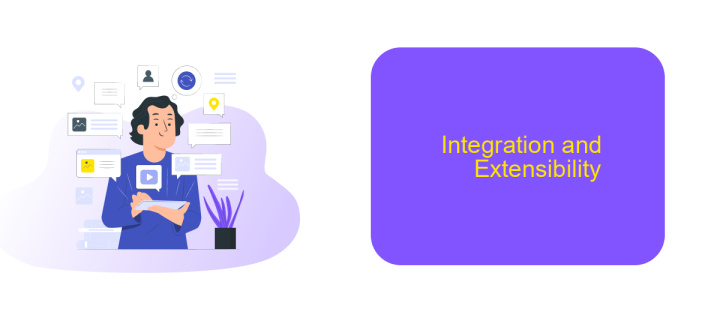MuleSoft ESB Vs Tibco Spotfire
In today's rapidly evolving business landscape, choosing the right integration and analytics tools is crucial for success. This article delves into a comparative analysis of MuleSoft ESB and Tibco Spotfire, two powerful solutions that cater to different aspects of enterprise needs. By examining their features, capabilities, and use cases, we aim to provide insights to help organizations make informed decisions.
Introduction
In today's fast-paced digital landscape, businesses are increasingly relying on robust integration platforms to streamline their operations and enhance data flow across various systems. Two prominent players in this domain are MuleSoft ESB and Tibco Spotfire, each offering unique features and capabilities to meet diverse integration needs.
- MuleSoft ESB: Known for its powerful API-led connectivity approach, MuleSoft ESB allows seamless integration of applications, data, and devices with a flexible, scalable architecture.
- Tibco Spotfire: Primarily recognized for its advanced analytics and data visualization capabilities, Tibco Spotfire also provides integration solutions that enable real-time data processing and insights.
Choosing the right integration platform is crucial for businesses aiming to achieve operational efficiency and data-driven decision-making. While MuleSoft ESB excels in comprehensive integration and API management, Tibco Spotfire stands out with its superior analytics and visualization tools. For companies looking to simplify their integration processes, services like ApiX-Drive offer user-friendly solutions to automate data flows between various applications, ensuring seamless connectivity and improved productivity.
MuleSoft ESB vs. Tibco Spotfire: An Overview

MuleSoft ESB (Enterprise Service Bus) and Tibco Spotfire serve distinct purposes within the enterprise technology landscape. MuleSoft ESB specializes in integrating various applications, data, and devices through a unified platform, offering robust API management and real-time analytics. It enables seamless connectivity across on-premise and cloud environments, making it ideal for businesses seeking to streamline their operations and enhance data flow. With tools like ApiX-Drive, setting up integrations becomes even more efficient, allowing for automated workflows and reduced manual intervention.
On the other hand, Tibco Spotfire is a powerful analytics and business intelligence tool designed to provide deep insights through data visualization and predictive analytics. It excels in transforming complex data into actionable insights, helping organizations make informed decisions. While it doesn't focus on integration like MuleSoft, Spotfire's strength lies in its ability to analyze and visualize data from multiple sources, offering a comprehensive view of business performance. Thus, while MuleSoft ESB and Tibco Spotfire serve different needs, they can complement each other in a data-driven enterprise environment.
Core Features and Capabilities

MuleSoft ESB and Tibco Spotfire are powerful tools designed to streamline business processes and enhance data integration capabilities. MuleSoft ESB excels in connecting various applications, data, and devices, providing a robust platform for seamless integration. Tibco Spotfire, on the other hand, is renowned for its advanced analytics and data visualization capabilities, making it a preferred choice for data-driven decision-making.
- Integration Capabilities: MuleSoft ESB offers comprehensive integration solutions, supporting APIs, SaaS, and on-premises systems. Tibco Spotfire integrates with numerous data sources, enabling real-time data analysis.
- Data Transformation: MuleSoft ESB provides powerful data transformation tools, ensuring data consistency across systems. Tibco Spotfire excels in transforming raw data into insightful visualizations.
- Scalability: Both platforms are highly scalable, accommodating the growing needs of enterprises. MuleSoft ESB supports complex integration scenarios, while Tibco Spotfire handles large datasets efficiently.
- User Interface: MuleSoft ESB features an intuitive interface for managing integrations, whereas Tibco Spotfire offers a user-friendly environment for creating interactive dashboards.
- Security: Both platforms prioritize security, with features like data encryption and access controls to protect sensitive information.
For businesses looking to simplify integration processes, services like ApiX-Drive can be highly beneficial. ApiX-Drive automates connections between various apps and systems, reducing manual effort and enhancing efficiency. While MuleSoft ESB and Tibco Spotfire provide robust core features, leveraging ApiX-Drive can further streamline your integration workflows.
Integration and Extensibility

MuleSoft ESB and Tibco Spotfire both offer robust integration and extensibility features, but they cater to different needs. MuleSoft ESB is designed to facilitate seamless integration across various systems, applications, and services, making it a powerful tool for enterprise-level integration. Tibco Spotfire, on the other hand, is primarily a data visualization and analytics tool that also offers integration capabilities to connect with various data sources.
When it comes to integration, MuleSoft ESB provides a comprehensive suite of tools and connectors that simplify the process of connecting disparate systems. It supports a wide range of protocols and formats, ensuring that almost any system can be integrated. Tibco Spotfire, while not as extensive in its integration capabilities as MuleSoft, still offers sufficient tools to connect to multiple data sources, enabling users to create insightful visualizations and perform advanced analytics.
- MuleSoft ESB: Extensive connectors and protocols support
- Tibco Spotfire: Strong data source integration for analytics
- ApiX-Drive: Simplifies integration setup with user-friendly interface
For organizations looking to streamline their integration processes, services like ApiX-Drive can be invaluable. ApiX-Drive offers a user-friendly interface to set up integrations quickly and efficiently, bridging the gap between different systems and applications. This makes it an excellent complement to both MuleSoft ESB and Tibco Spotfire, enhancing their integration and extensibility capabilities.
Scalability and Performance
When evaluating scalability and performance, MuleSoft ESB and Tibco Spotfire offer distinct advantages tailored to different enterprise needs. MuleSoft ESB excels in handling large-scale integrations with its cloud-native architecture, allowing seamless scaling both vertically and horizontally. It efficiently manages high volumes of transactions and data flows, ensuring consistent performance even under heavy loads. MuleSoft's robust API management capabilities further enhance its scalability, making it a preferred choice for enterprises aiming for rapid growth and complex integrations.
On the other hand, Tibco Spotfire is renowned for its high-performance analytics and data visualization capabilities. It is designed to process vast amounts of data quickly, providing real-time insights and advanced analytics. While Spotfire is not an ESB, its ability to handle large datasets and deliver fast, interactive visualizations makes it invaluable for data-driven decision-making. For organizations looking to integrate Spotfire with other systems, solutions like ApiX-Drive can simplify the process, ensuring seamless data flow and integration without compromising performance.
FAQ
What is the primary difference between MuleSoft ESB and Tibco Spotfire?
Can MuleSoft ESB and Tibco Spotfire be used together?
Which platform is better for real-time data processing?
What are the deployment options for MuleSoft ESB and Tibco Spotfire?
Are there services available to help implement and integrate these platforms?
Apix-Drive is a simple and efficient system connector that will help you automate routine tasks and optimize business processes. You can save time and money, direct these resources to more important purposes. Test ApiX-Drive and make sure that this tool will relieve your employees and after 5 minutes of settings your business will start working faster.

